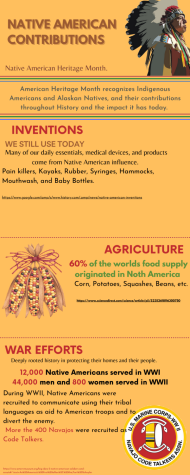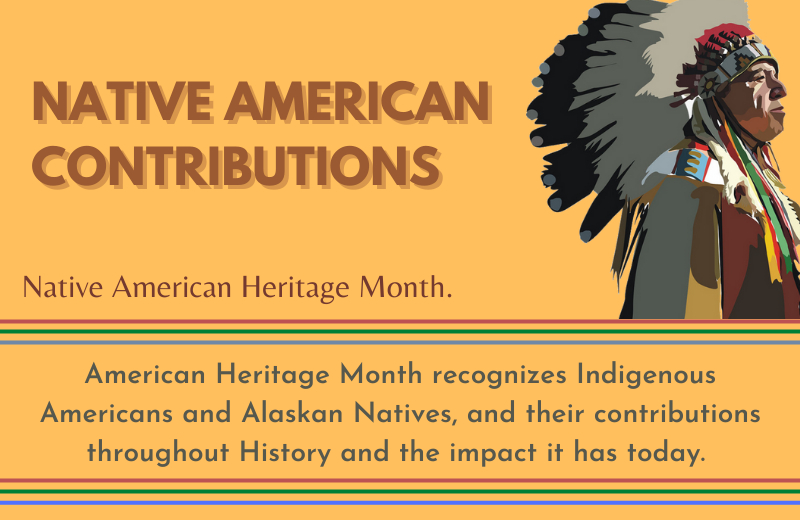
The Unseen Tapestry: Native American Contributions Woven into Modern Society
For too long, the narrative of modern society has been presented through a singular lens, often overlooking the profound and indelible contributions of the Indigenous peoples of the Americas. From the food on our plates to the principles of our governance, from life-saving medicines to the very concept of environmental stewardship, Native American innovations and wisdom are not merely historical footnotes but living threads woven deeply into the fabric of contemporary life. To ignore these contributions is to diminish a rich legacy and to misunderstand the true, complex origins of much that we consider "modern."
One of the most immediate and impactful areas of Native American influence lies in agriculture and global food systems. Before European contact, Indigenous peoples cultivated an astonishing array of crops, transforming wild plants into staples that now feed the world. Maize (corn), potatoes, tomatoes, beans, squash, chili peppers, pumpkins, peanuts, avocados, cranberries, and chocolate are just a few examples of foods domesticated by Native Americans and subsequently introduced to the rest of the world during what is often termed the "Columbian Exchange."
"It’s estimated that over 60% of the world’s food crops today originated in the Americas," notes Charles C. Mann in his seminal work 1491: New Revelations of the Americas Before Columbus. "Without these crops, the global population could not have grown as it has." The potato, for instance, revolutionized European diets, becoming a key caloric source that fueled population booms and industrialization. Maize became a global commodity, foundational to livestock feed and numerous processed foods. These agricultural innovations were not accidental; they were the result of millennia of sophisticated plant breeding, land management, and ecological understanding. Native American farmers developed advanced techniques like companion planting (the "Three Sisters" – corn, beans, and squash), terracing, and extensive irrigation systems that sustained vast populations.
Beyond the dinner table, Native American ingenuity significantly advanced medicine and pharmacology. Long before modern laboratories, Indigenous healers possessed an encyclopedic knowledge of the medicinal properties of plants. Many widely used pharmaceutical compounds today have their roots in Native American traditional medicine. Quinine, derived from the cinchona tree and a crucial treatment for malaria, was first used by Indigenous peoples of the Andes. The active ingredient in aspirin, salicylic acid, found in willow bark, was employed by various tribes for pain relief and fever reduction. Ephedrine, a decongestant, was utilized by the Ephedra species by some Western tribes.
Furthermore, Native American surgical practices were remarkably advanced. Evidence suggests some tribes performed complex procedures, including trepanation (drilling holes into the skull), with surprising success rates, often using obsidian blades that rivaled modern surgical steel in sharpness. Their holistic approach to health, integrating physical, spiritual, and community well-being, offers valuable lessons that modern medicine is only now beginning to fully appreciate.

Perhaps one of the most profound, yet often unacknowledged, contributions is in the realm of governance and democratic thought. The Iroquois Confederacy (Haudenosaunee), a political and social alliance of six nations, developed a sophisticated system of governance known as the Great Law of Peace (Kaianere’kó:wa) centuries before the drafting of the U.S. Constitution. This system featured a federal structure with checks and balances, a separation of powers, and the concept of popular sovereignty, all designed to ensure peace and equity among diverse nations.
Historians and scholars, including Bruce E. Johansen and Donald A. Grinde Jr., have meticulously documented the influence of the Great Law of Peace on the Founding Fathers. Benjamin Franklin, Thomas Jefferson, and other early American leaders were familiar with the Iroquois system, attending councils and studying its structure. "The Haudenosaunee Confederacy was a living example of a functional, enduring democracy, and it offered a powerful model for the emerging United States," states Grinde Jr. in Exemplar of Liberty. The concepts of a united federation, independent states with a common purpose, and the rights of the people, were not solely European imports but were demonstrably shaped by exposure to Indigenous governance.
The spirit of environmentalism and sustainable living is another cornerstone of Native American wisdom that is increasingly vital today. Traditional Indigenous cultures often emphasize a deep reverence for the land, seeing humans not as conquerors of nature but as integral parts of an interconnected web of life. The concept of "seventh generation" stewardship, which dictates that decisions made today should consider their impact seven generations into the future, exemplifies this profound ecological awareness.
This philosophy stands in stark contrast to the often exploitative relationship many modern industrial societies have with the environment. As environmental crises mount, the world is increasingly turning to Indigenous knowledge for solutions in sustainable forestry, water management, biodiversity preservation, and renewable energy. The wisdom embedded in practices like controlled burns for forest health, polyculture farming, and respecting the carrying capacity of the land offers practical blueprints for a more sustainable future.
Beyond these tangible contributions, Native American cultures have enriched global society through language, art, and philosophy. Hundreds of English words, from "canoe" and "toboggan" to "moccasin," "squash," "pecan," and "totem," are derived from Indigenous languages. Countless place names across the Americas—Mississippi, Chicago, Massachusetts, Seattle, Manhattan—are enduring linguistic monuments to the original inhabitants.
Native American art forms—pottery, weaving, basketry, jewelry, carving, and storytelling—are celebrated globally for their aesthetic beauty, intricate craftsmanship, and deep cultural significance. These artistic traditions continue to inspire contemporary artists and designers worldwide, influencing fashion, architecture, and visual arts. The rich oral traditions, myths, and legends of various tribes offer profound insights into human nature, morality, and the cosmos, serving as a powerful counter-narrative to Eurocentric philosophical frameworks.
In the realm of technology and innovation, Native Americans also made significant strides. The development of the canoe and kayak, perfectly adapted for diverse aquatic environments, revolutionized travel and trade. Snowshoes and toboggans were ingenious solutions for winter mobility. Complex astronomical observatories, intricate road systems, and advanced architectural feats like the cliff dwellings of the Ancestral Puebloans or the mound cities of the Mississippian cultures showcase sophisticated engineering and planning capabilities.
It is crucial to acknowledge that these contributions were made despite, and often in the face of, immense adversity. Centuries of colonialism, forced assimilation, land dispossession, and cultural suppression attempted to erase Indigenous identities and knowledge. Yet, Native American resilience has ensured that these invaluable contributions persist and continue to enrich global society.
Today, as Indigenous peoples reclaim their narratives and assert their sovereignty, their ongoing contributions are more visible than ever. Native scientists are leading in climate research, artists are challenging perceptions, activists are at the forefront of environmental justice movements, and leaders are advocating for a more equitable and inclusive world.

The tapestry of modern society is not solely woven from European threads. It is a vibrant, intricate fabric, significantly enriched by the wisdom, ingenuity, and enduring spirit of Native American peoples. Recognizing these contributions is not just an act of historical correction; it is an essential step towards a more complete understanding of our shared human heritage and a deeper appreciation for the diverse sources of knowledge that continue to shape our world. By truly listening to and learning from Indigenous voices, we can collectively build a more sustainable, just, and harmonious future for all.


